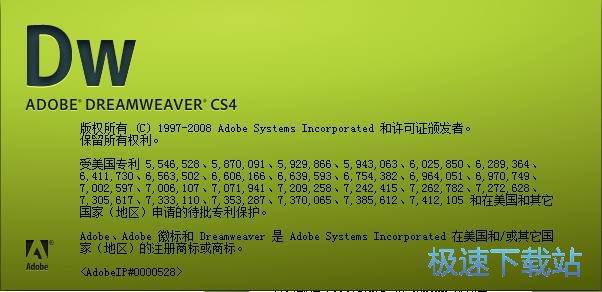HTML5 28个新增特性 程序员必备技巧
时间:2011-12-20 23:29:54 作者:不思议游戏 浏览量:271
1. 新的Doctype
- 进入下载

- Adobe Dreamweaver CS4 10.0 免激活免序列...
大小:62.19 MB
日期:2021/8/29 16:05:41
环境:WinXP,Win7
尽管使用<!DOCTYPE html>,即使浏览器不懂这句话也会按照标准模式去渲染
2. Figure元素
用<figure>和<figcaption>来语义化地表示带标题的图片
<figure>
<img src=”path/to/image” alt=”About image” />
<figcaption>
<p>This is an image of something interesting. </p>
</figcaption>
</figure>
3. 重新定义的<small>
<small>已经被重新定义了,现在被用来表示小的排版,如网站底部的版权声明
4. 去掉link和script标签里面的type属性
5. 加/不加 括号
HTML5没有严格的要求属性必须加引号,闭合不闭合,但是建议加上引号和闭合标签
6. 让你的内容可编辑,只需要加一个contenteditable属性
7. Email Inputs
如果我们给Input的type设置为email,浏览器就会验证这个输入是否是email类型,当然不能只依赖前端的校验,后端也得有相应的校验
8. Placeholders
这个input属性的意义就是不必通过javascript来做placeholder的效果了
9. Local Storage
使用Local Storage可以永久存储大的数据片段在客户端(除非主动删除),目前大部分浏览器已经支持,在使用之前可以检测一下window.localStorage是否存在
10. 语义化的header和footer
11. 更多的HTML5表单特性
12. IE和HTML5
默认的,HTML5新元素被以inline的方式渲染,不过可以通过下面这种方式让
其以block方式渲染
header, footer, article, section, nav, menu, hgroup {
display: block;
}
不幸的是IE会忽略这些样式,可以像下面这样fix:
document.createElement(”article”);
document.createElement(”footer”);
document.createElement(”header”);
document.createElement(”hgroup”);
document.createElement(”nav”);
document.createElement(”menu”);
13. hgroup
一般在header里面用来将一组标题组合在一起,如
<header>
<hgroup>
<h1> Recall Fan Page </h1>
<h2> Only for people who want the memory of a lifetime. </h2>
</hgroup>
</header>
14. Required属性
required属性定义了一个input是否是必须的,你可以像下面这样声明
<input type=”text” name=”someInput” required>
或者
<input type=”text” name=”someInput” required=”required”>
15. Autofocus属性
正如它的词义,就是聚焦到输入框里面
<input type=”text” name=”someInput” placeholder=”Douglas Quaid” required autofocus>
16. Audio支持
HTML5提供了<audio>标签,你不需要再按照第三方插件来渲染音频,大多数现代浏览器提供了对于HTML5 Audio的支持,不过目前仍旧需要提供一些兼容处理,如
<audio autoplay=”autoplay” controls=”controls”>
<source src=”file.ogg” /><!–FF–>
<source src=”file.mp3″ /><!–Webkit–>
<a href=”file.mp3″>Download this file.</a>
</audio>
17. Video支持
和Audio很像,<video>标签提供了对于video的支持,由于HTML5文档并没有给video指定一个特定的编码,所以浏 览器去决定要支持哪些编码,导致了很多不一致。Safari和IE支持H.264编码的格式,Firefox和Opera支持Theora和Vorbis 编码的格式,当使用HTML5 video的时候,你必须都提供:
<video controls preload>
<source src=”cohagenPhoneCall.ogv” type=”video/ogg; codecs=’vorbis, theora’” />
Adobe Dreamweaver CS4 10.0 免激活免序列号精简版
- 软件性质:国外软件
- 授权方式:免费版
- 软件语言:简体中文
- 软件大小:63687 KB
- 下载次数:2446 次
- 更新时间:2022/3/13 3:06:19
- 运行平台:WinXP,Win7...
- 软件描述:Dreamweaver CS4即为Dreamweaver的CS4版本,Dream... [立即下载]
相关资讯
相关软件
- 破解qq功能和安装教程
- 怎么将网易云音乐缓存转换为MP3文件?
- 比特精灵下载BT种子BT电影教程
- 微软VC运行库合集下载安装教程
- 土豆聊天软件Potato Chat中文设置教程
- 怎么注册Potato Chat?土豆聊天注册账号教程...
- 苏宁豆芽特色介绍及功能板块
- 浮云音频降噪软件对MP3降噪处理教程
- 英雄联盟官方助手登陆失败问题解决方法
- 蜜蜂剪辑添加视频特效教程
- 神奇大图打印软件的方法介绍
- Animated Screensaver Maker制作转盘旋转教...
- Animated Screensaver Maker怎么画颜色渐变...
- Animated Screensaver Maker 动特效的实现方...
- 腾讯电脑管家如何清除电脑使用痕迹
- 海螺桌面退出方法
- 嗨格式压缩大师导出日志方法
- 嗨格式数据恢复大师如何找回删除文件
- ParkControl怎么安装破解
- HEU KMS Activator最新版本使用教程





